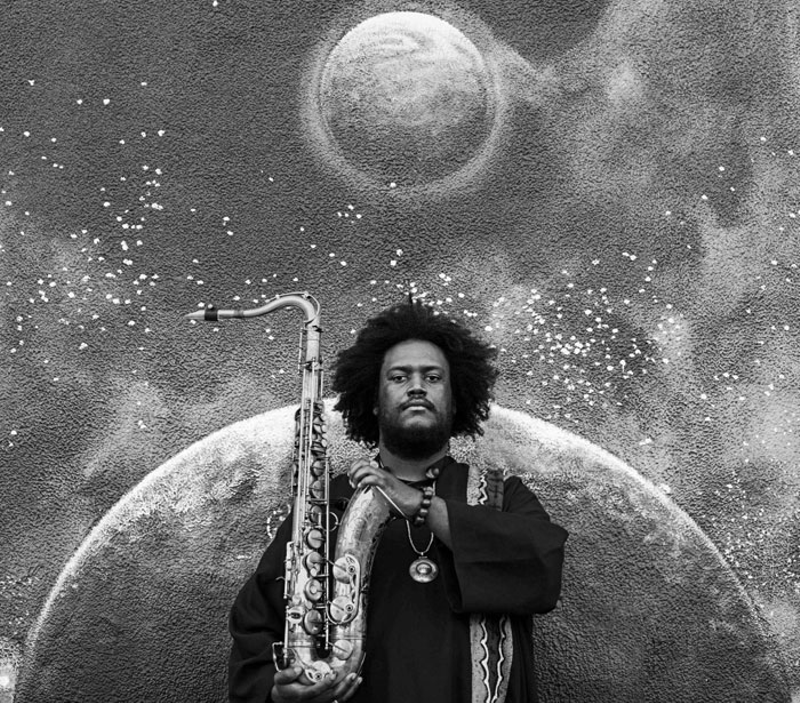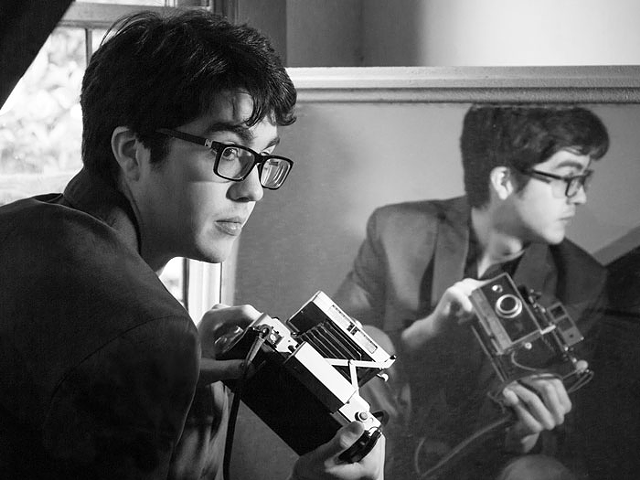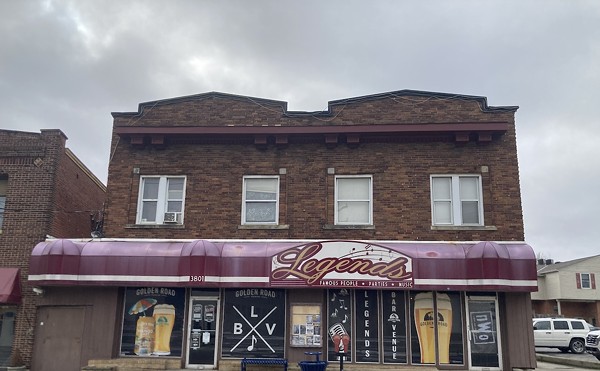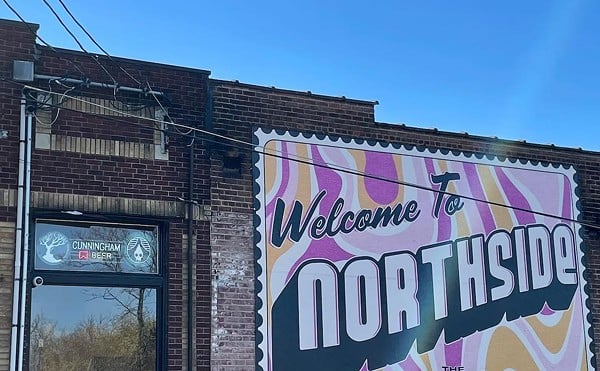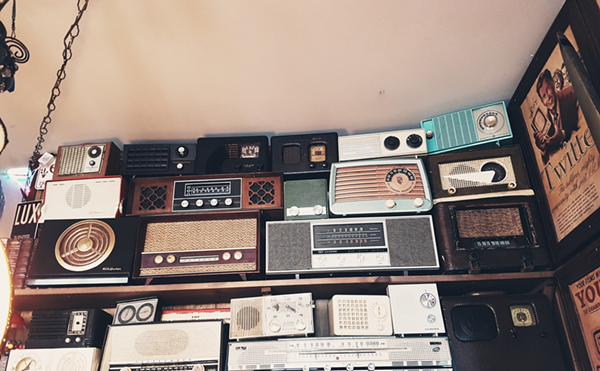Charismatic Los Angeles Jazz artist Kamasi Washington has been on a so-far phenomenally successful mission to bring Jazz to those unfamiliar with it.
His first widely distributed Jazz album as a bandleader, last year’s three-disc (and nearly three-hour) The Epic, startled Jazz and Pop fans alike with its ambition and his tremendous range as both a tenor saxophonist and a composer/arranger. Not satisfied just to use a large ensemble of Jazz players, he also created parts for strings and choir.
The result ranged from 1960s-style spiritual-union explorations reminiscent of such Free Jazz pioneers as John Coltrane, Albert Ayler and Pharoah Sanders to a swinging arrangement of Ray Noble’s 1938 standard “Cherokee” and even a take on Debussy’s “Clair de Lune.” The record made both Jazz and Pop best-of lists, and propelled the 35-year-old not only into major Jazz venues, but also onto the circuit of hip, Alternative/Indie music festivals and into playing with the Los Angeles Philharmonic at Walt Disney Concert Hall.
In a phone interview, Washington says that his success should be a rejoinder to all those who say Jazz has become a niche genre. What he is playing now is what he and his musician friends long had been doing as part of L.A.’s very active African-American arts scene.
“There is this idea constantly being thrown out there that Jazz was ‘dying,’ ” he says. “From my perspective and that of my friends, it wasn’t true. In L.A., while playing Jazz to all types of audiences, they loved it. But we never before got a chance to bring our version of Jazz — from our generation, our neighborhood — to the people beyond. We felt if we had the opportunity, we could disprove this idea that Jazz somehow is not a likeable music.”
Washington also knew something else. Contemporary Hip Hop and R&B artists liked Jazz and admired its players, which could give him cred with a younger generation. He had toured with Snoop Dogg and Raphael Saadiq, and provided important contributions to Kendrick Lamar’s landmark To Pimp a Butterfly album.
“For most of my career, the artists I’ve worked with have not been Jazz artists,” he says. “But they had Jazz in their music and Jazz musicians in their band. Their appreciation for Jazz was huge. So even though the idea of Jazz had been so diminished that many thought people didn’t want to hear it, we disagreed.”
Washington grew up in L.A.’s Inglewood neighborhood. His father was a soprano saxophonist and music teacher. His family’s friends were also musicians.
“A lot of times as a kid, your friends are your parents’ friends’ kids,” Washington says. “And they were all musicians and were serious about it. It was something that was always in my life and it felt like it was going to be in my life.”
As a youngster, he began playing the family piano and his father quickly recognized a protégé.
“I could sit there and play all day long and I didn’t get bored,” Washington says. “He knew it would pay off as I got older. He didn’t have to tell me to practice — he had to tell me to stop practicing because it was driving the neighbors crazy.”
At age 13, he started playing sax. He enrolled in the L.A.’s Academy of Music and Performing Arts at Hamilton High School, and then went to UCLA on full scholarship to pursue ethnomusicology. He began playing with professional Jazz musicians he admired, like trumpeter and bandleader Gerald Wilson, McCoy Tyner and Freddie Hubbard.
Today, Washington is an advocate of getting a formal music education, even while acknowledging it has its limits.
“Whether it comes through an institution or your own personal level, to be knowledgeable in whatever you do is important,” he says. “I wouldn’t say that the only way for a person to get an education is at a university, but you do need to be educated.”
He also believes there is a spiritual dimension to Jazz, a level of questing expressed by Coltrane on albums like A Love Supreme.
“I feel that even when musicians don’t intend for their music to be ‘spiritual,’ there’s something that sets the spirit free,” Washington says. “Whenever you play music and reach someone, you reach them on a spiritual level. When someone says they like music because they feel it, that’s spiritual.”
One reason for Jazz’s “square” image for many is because a stereotype has emerged regarding the way it’s heard live — that fans sit quietly and listen intently without much physical interaction. And many of its greatest post-World War II musicians have wanted fans to really listen as they would at a Classical concert.
“I understand that historically in Jazz, especially when African-Americans were coming out of an era where they weren’t allowed to express what’s on their minds, their musicians wanted people to hear their music as an instrument of the mind and not just connect with it on a more natural level,” Washington says.
But at Washington’s concerts, especially those at Pop or outdoor festivals, the vibe can be more like that of a Jam-band show, with audience members moving, grooving and forming dance lines and circles. The closest thing to it in Jazz is the Sun Ra Arkestra or the Dirty Dozen Brass Band; in Pop it might be the Grateful Dead. Washington is comfortable with that.
“Now, there’s a purpose in bringing people together,” he says. “So it’s a good thing, what they’re doing. If a person moves, it’s a sign they’re connecting. Even if you play music that’s not usually considered dance music, the musicians always move. The music inspires me to move, because I’m feeling it. So to me, if people move to my music, it’s a sign it’s reaching them. It’s a positive.”
KAMASI WASHINGTON plays 6:15 p.m. Saturday on the Skyline Stage at 2016’s MidPoint Music Festival. Visit mpmf.com for tickets and details.

